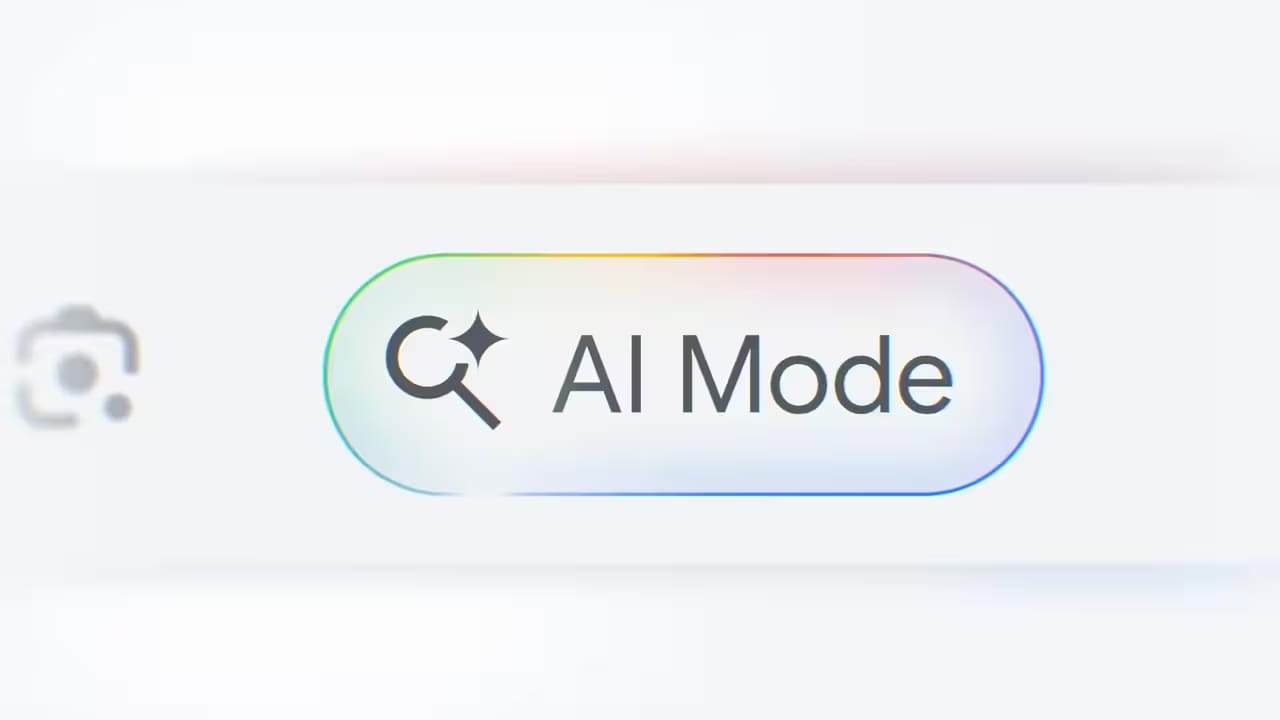- Click Raven
- Posts
- Search in Transition: AI's Real Impact on SEO, Advertising, and User Behavior
Search in Transition: AI's Real Impact on SEO, Advertising, and User Behavior
Can Traditional SEO Survive AI Search? Plus: DuckDuckGo's new AI filters, 7 Google Ads Search filters to use, and optimization strategies to help you keep up.
Is SEO just another strategy left behind by time? Is AI the new search tool we should all be optimizing for?
It’s a debate with no clear winner and plenty of loyalists on both sides.
In today’s edition of ClickRaven’s Growth Grind newsletter, we dig into the signal beneath the noise.
While AI-powered tools like ChatGPT and Google's AI Overviews capture headlines with promises of revolutionary change in search, the reality is more nuanced.
In this edition, we break down the overlap between SEO and AI content strategy:
6 strategies to help surface your content for the LLMs citations
7 Google Ads' search term filters to help manage your Ad spend wisely
And despite the rise of AI, SEO isn’t dead but it’s evolving in ways that demand rethinking how content is built, labeled, and distributed
DuckDuckGo lets users filter out AI-generated images, fueling the authenticity vs automation debate
Welcome to the era of dual search strategies. Pick your side or master both.
6 Strategies To Help Boost Your Content’s Visibility in AI Search

Basic SEO strategy is getting torched and what’s rising from the ashes is Generative Engine Optimization (GEO), the new buzzword in AI search visibility.
Forget keyword-stuffed blogs and "ultimate guides,” what matters now is content with original insight that feeds AI systems like ChatGPT and Google’s AI Overviews.
Here are some focus points to help you create a stronger strategy for your content and brand visibility in AI search.
📈 Information Gain Is the New Ranking Factor
AI doesn’t want reworded summaries from AI generated content, it wants something new. You’re either cited or forgotten.
Offer insights that AI can cite through:
proprietary data
first-hand research
unique case studies
🔍 Keywords Are Dead Weight
Keyword research optimizes for the wrong search engine.
Research the raw data sources that train LLMs like X (for Grok), discussion forums like Reddit, or publishing partnerships (for ChatGPT) to get the conversation topics.
That’s where the real content demand lives.
🤖 AI Inputs vs. AI Outputs
Content created using AI outputs will fail (long-term) because it's "derivative, diluted, and hallucinatory."
AI systems won't retrain on AI-generated content to avoid degradation.
Instead, use the same primary data sources that feed AI engines - surveys, original research, press coverage.
📊The New Success Metrics
Unlike SEO's ranking system, with AI you either get cited or you don't.
There's no gradual ranking improvement.
🛠 Technical SEO Still Counts
Proper site health is still important, so check on:
Fast loading
Schema markup
Conversational content architecture
HTML anchors
llms.txt files
RSS feeds
✍️ Prioritize Human-Written Content
AI systems spot AI-written content instantly. Be real, be raw, be original.
What they can’t replicate is your unique voice, humor, and human experience.
📌 Bottom Line
To win in the AI-first era, stop aggregating and start originating.
GEO success comes from high-effort, primary-source content built for humans and worthy of being taught to machines.
7 Smart Google Ads Filters to Slash Wasteful Ad Spend

Google’s lack of query transparency and aggressive term matching could be the reason your ad dollars are bleeding into low-quality clicks.
With search terms and negative keywords now rolling out to Performance Max campaigns, you have to be smart with the search filters to get your money’s worth.
1. Block One-Word Keywords:
Filter out search terms without spaces to eliminate overly broad, low-intent queries like "kids" that waste budget on upper-funnel traffic.
2. Separate Brand from Non-Brand Campaigns:
Keep branded searches out of non-brand campaigns using exact match negatives to ensure proper campaign structure and budget allocation.
3. Statistical Significance Filter:
Only make performance-based decisions on terms with meaningful data (e.g., 100+ clicks and ROAS >2) to avoid knee-jerk reactions to small sample sizes.
For one or no conversions, you might want to block the search terms and allocate the ad spend elsewhere or make a decision based on your judgment and experiences.
4. Organic Content Opportunities:
Identify high-CTR, low-conversion terms that indicate search interest but aren't ready to convert.
These are the perfect candidates for content marketing instead of paid ads.
5. Core Keyword Requirements:
Filter out terms that don't contain essential keywords for your business to quickly spot irrelevant spend and find expansion opportunities.
6. Location-Based Filtering:
For multi-location businesses, use geographic filters to ensure ads only show in serviceable areas and eliminate wasted regional spend.
7. Low CTR Red Flags:
Target high-impression, sub-1% CTR terms to identify ad relevance issues, intent mismatches or fundamental market understanding problems.
👉For Marketers:
These filters:
Save time (no manually reviewing 157,000+ line items monthly)
Reduce waste
Offer campaign structure improvements that boost overall advertising effectiveness.
Identify market insights and content opportunities.
The key is adapting these tactics to each account's unique parameters rather than applying them universally.
Learn AI in 5 minutes a day
What’s the secret to staying ahead of the curve in the world of AI? Information. Luckily, you can join 1,000,000+ early adopters reading The Rundown AI — the free newsletter that makes you smarter on AI with just a 5-minute read per day.
🔍 AI Search Reality Check: SEO Is Not Dead!

Despite the AI search hype, the numbers tell a different story.
Google processed 14 billion searches daily in 2024 which is 373 times more than ChatGPT's estimated daily search-like prompts.
Meanwhile, AI search drives less than 1% of traffic to most websites as of June 2025.
✔ Why SEO Still Matters:
Users still favor traditional search for straightforward, fact-based queries.
They use LLMs for nuanced tasks requiring explanation or conversations.
Technically, AI systems are heavily dependent on traditional search.
Google's AI Overviews pull from Google's own search index, and there are speculations that ChatGPT now pulls from Google results rather than just Bing.
The "revolutionary" AI optimization tactics being sold as brand new are largely updates of existing SEO practices.
Examples include: conversational search (voice search since 2015), multi-modal content, digital PR for authority, structured data, content chunking, and cross-platform visibility strategies.
🧠The Takeaway:
This represents an evolution, not a revolution.
The content performing best in AI responses is typically the same high-quality, well-optimized content that excels in traditional Google Search.
For businesses, this means investment in AI optimization is important, but it should be complementary to, not replacement for, existing SEO practices.
The industry has seen similar "SEO is dead" cycles with Google+, mobile-first indexing, voice search, Core Web Vitals, and TikTok - none of which killed SEO.
⚒ What Can Be Done About It:
Businesses should adopt Answer Engine Optimization (AEO) services to track visibility across multiple LLMs and understand brand perception in AI responses.
New tools like Profound, Peec AI, Otterly, and updated features in Semrush and Ahrefs support this process.
SEO teams should develop new skills in AI literacy, prompt engineering, and semantic search while maintaining strong traditional SEO foundations.
👉 Companies should resist the fear-driven rush toward AI-only strategies and maintain balanced approaches that optimize for both traditional search (where 99%+ of traffic still originates) and emerging AI platforms.
DuckDuckGo Gives Users the AI Off Switch
DuckDuckGo has rolled out a new "AI images" filter, giving users the option to hide AI-generated visuals in image search.

Available via settings, dropdown menu, or at noai.duckduckgo.com.
The tool uses open-source blocklists to significantly reduce, though not completely eliminate, AI images.
This move reinforces DuckDuckGo’s privacy-first, user-controlled positioning standing apart from major search engines increasingly embracing AI.
While their market share is modest, the feature taps into a rising demand for transparency and choice in AI exposure.
📢For content creators:
User preferences are divided, not everyone wants AI-generated content.
Original, human-created content may gain value as AI filters become more common.
Transparency in labeling content sources could become a competitive advantage.
💡 This growing user desire for control over AI exposure suggests that offering "less AI" rather than "more AI" could become a viable competitive strategy.
💬 I’d love to hear from you.
Which of these strategies are you already leaning into or planning to explore? Just hit reply and let me know.
And if you found this helpful, forward it to a friend or team member who’s serious about growth. Let’s win together.
Until next time, have a good one!
The Growth Grind Team,
Part of Click Raven, Inc.
